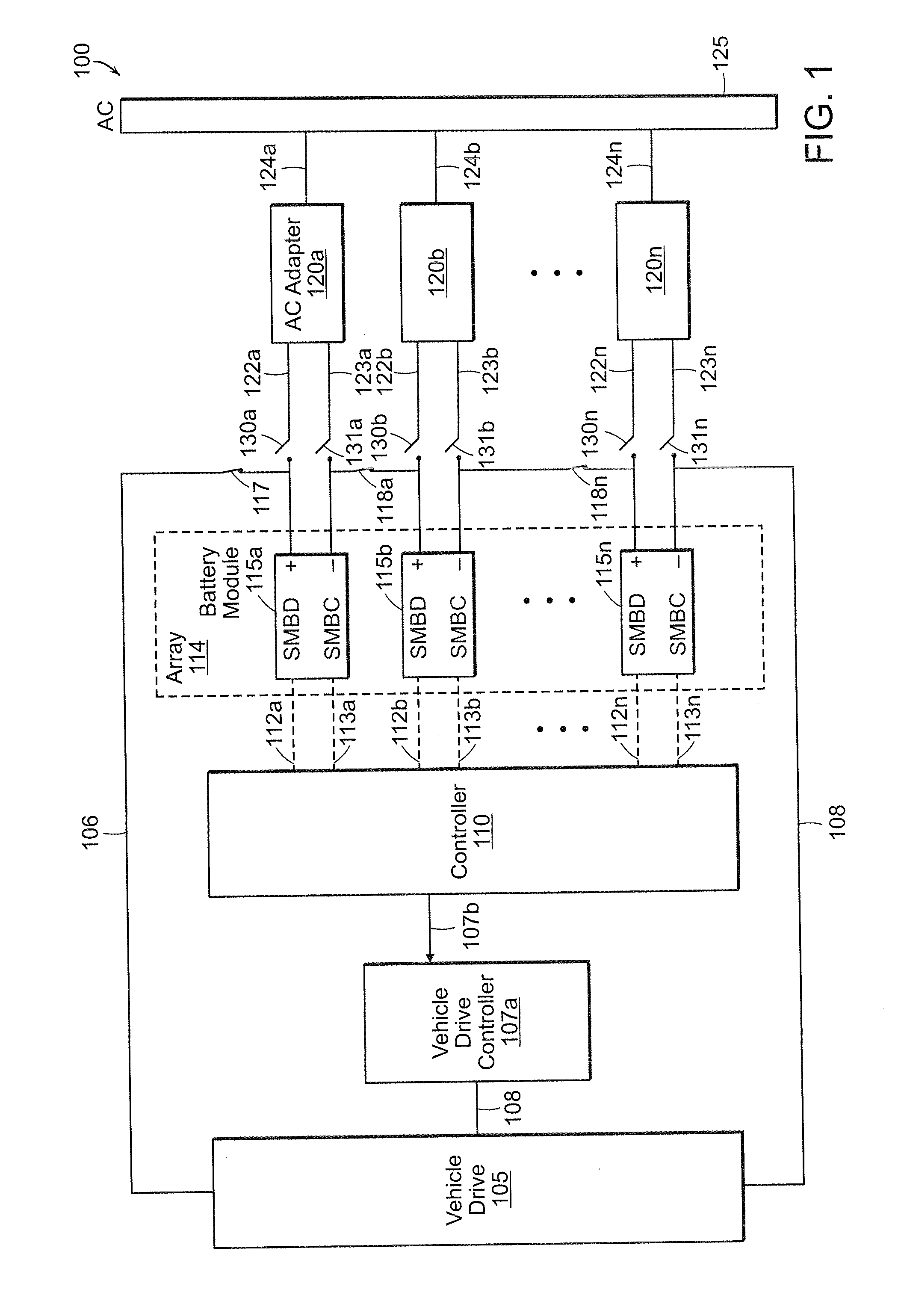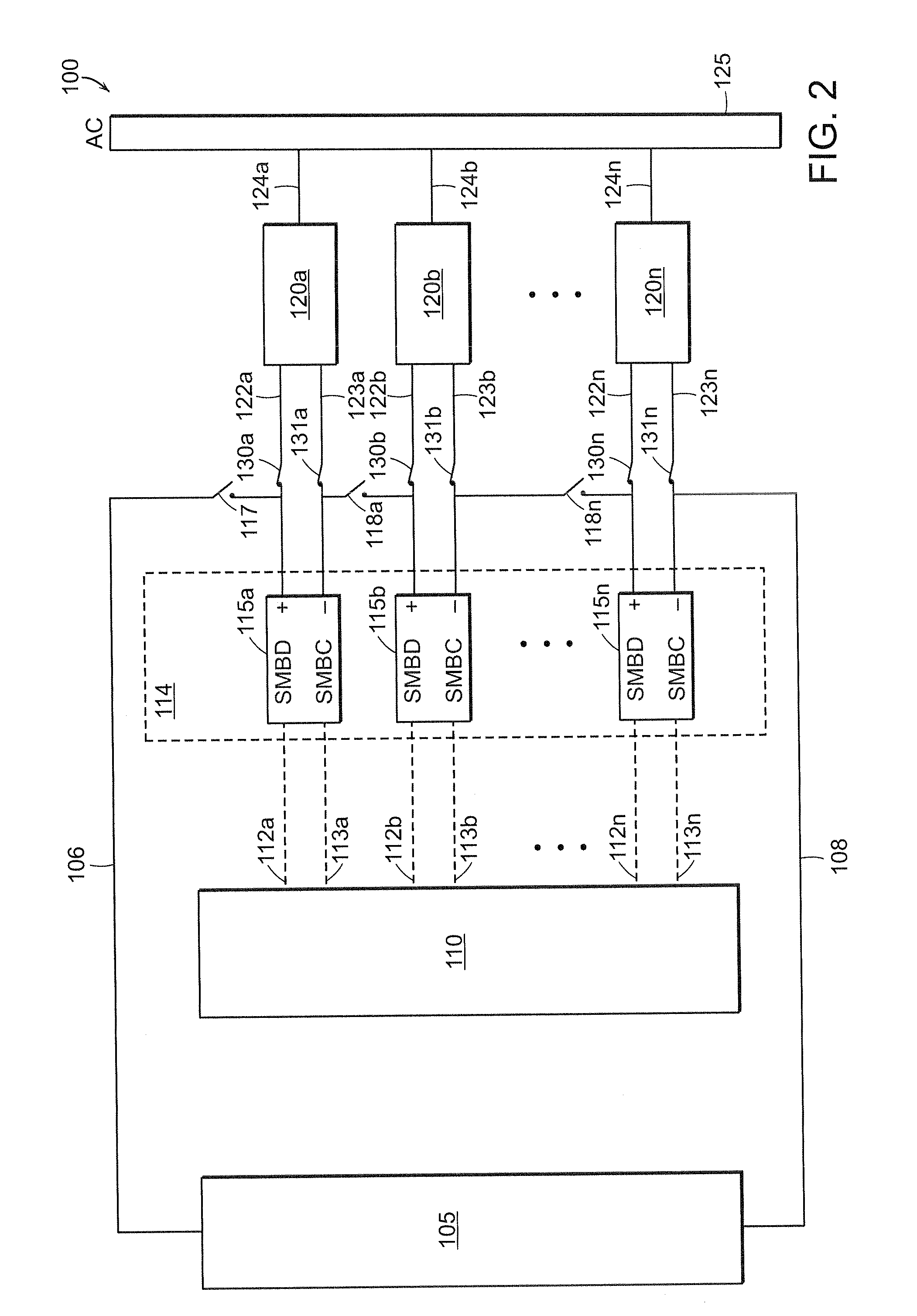Li-ion battery array for vehicle and other large capacity applications
a technology for lithium-ion batteries and vehicles, applied in battery/fuel cell control arrangements, process and machine control, instruments, etc., can solve the problem of significant portion of the overall weight of electric vehicles, and achieve the effect of reducing the time necessary, and reducing the cost of operation
- Summary
- Abstract
- Description
- Claims
- Application Information
AI Technical Summary
Benefits of technology
Problems solved by technology
Method used
Image
Examples
Embodiment Construction
[0023]A description of example embodiments of the invention follows.
[0024]Current notebook PC battery packs already contain electronics that control the charging, discharging, balancing, and monitoring of lithium-ion battery cells. The present disclosure incorporates the primary features of the existing technology in notebook PC battery packs to provide “battery modules” in the vehicle battery. Each module may contain several lithium-ion cells and electronics to control the charging, discharging, monitoring, balancing, and protective modes of those cells. The array may also include the necessary AC adapters to provide the required. DC voltage to charge itself (the size of which would be optimized for the desired charging time of the battery modules). The battery modules of the array may be controlled by the module management electronics and charged using low-voltage by a power adapter, all of which are connected to a high-voltage power bus. A network of switches allows those battery...
PUM
 Login to View More
Login to View More Abstract
Description
Claims
Application Information
 Login to View More
Login to View More - R&D
- Intellectual Property
- Life Sciences
- Materials
- Tech Scout
- Unparalleled Data Quality
- Higher Quality Content
- 60% Fewer Hallucinations
Browse by: Latest US Patents, China's latest patents, Technical Efficacy Thesaurus, Application Domain, Technology Topic, Popular Technical Reports.
© 2025 PatSnap. All rights reserved.Legal|Privacy policy|Modern Slavery Act Transparency Statement|Sitemap|About US| Contact US: help@patsnap.com



